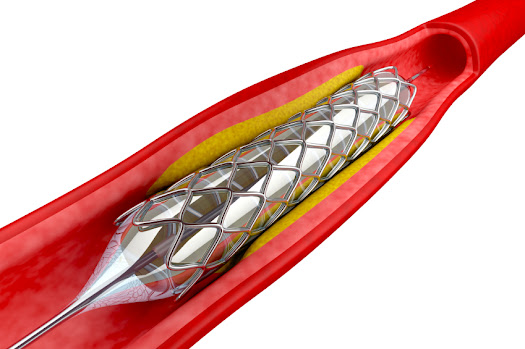Biodegradable Stents Are a Promising Alternative to Permanent Stents
Biodegradable stents (or bioresorbable stents) are medical
devices made from bio-absorbent material such as metal or polymer used to
achieve normal flow of blood or other blood fluids in the case of narrowed or clogged
blood vessels. A stent is a small tube that can be inserted into a blocked
passageway to keep it open. Biodegradable stents serve the same purpose but is
manufactured from a material that may dissolve or be absorbed into the body.
Biodegradable stents are used to solve the lingering problem
of in-stent restenosis. Moreover, biodegradable stents can deliver more drugs
to the target site than a thin coating of the drug on metallic stents. Over the
years, several innovative biodegradable stents have been innovated and
developed as potential alternatives to the now-ubiquitous permanent heart-shaped
cardiovascular stents currently in use. Furthermore, biodegradable stents are
proved to be effective in real-world applications.
A potential breakthrough in the field of biodegradable
stents was made in 2013 with the introduction of zinc and its alloys, which
harmlessly degrade at a rate of ~0.02 mm per year. Traditionally, stents were
designed to remain in the body permanently until they were removed through
surgical intervention. But nowadays, biodegradable stents are made of materials
that dissolve or get absorbed in the body. Stents help keep blood vessels open
and reduce the chance of heart attack.
With the increasing prevalence of cardiovascular diseases,
the demand for stents is also increasing at a rapid pace. Cardiovascular
diseases are the leading cause of death in the United States. According to the Centers for Disease Control
and Prevention (CDC), one person dies every 36 seconds in the U.S. from
cardiovascular disease. Around 655,000 people in the U.S. die from heart
disease each year. Moreover, coronary stenting has become an integral part of
percutaneous coronary intervention procedures.




Comments
Post a Comment